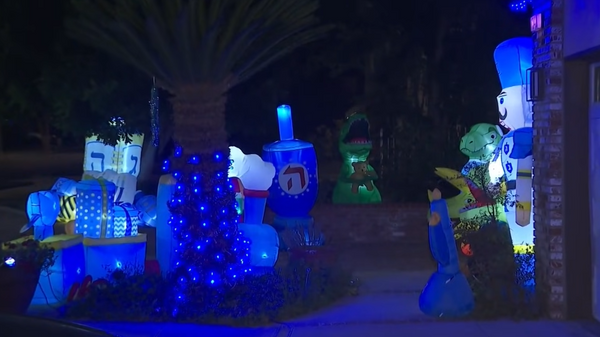
A potent cannibal solar storm has hit Earth and could put on a spectacular northern lights display across the U.S tonight.
A fast-moving coronal mass ejection (CME), launched by a long-duration M2.7 flare from sunspot AR 4199 on Aug. 30, slammed into Earth's magnetic field around 5 p.m. EDT (2100 GMT) on Sept. 1, according to NOAA's Space Weather Prediction Center (SWPC).
The CME is likely to spark a G2 (moderate) to G3 (strong) geomagnetic storm, with a chance of reaching G4 (severe) levels, according to NOAA and the U.K. Met Office. That means auroras could extend much farther south than usual — potentially giving millions across the northern and even central U.S. a shot at catching the lights.
What's causing the aurora activity?
The expected auroras are being driven by an impact from a powerful coronal mass ejection (CME) — a huge cloud of charged solar plasma and magnetic field launched from the sun — that erupted on Aug. 30 from sunspot AR4199. The CME slammed into Earth's magnetic field at 5 p.m. EDT (2100 GMT) on Sept. 1. It has the potential to trigger strong G3-level geomagnetic storming, with a chance of G4 (severe) conditions, according to both the U.K. Met Office and NOAA.

If this level of storming occurs, auroras could be visible much farther south than usual — possibly reaching into mid-latitude states such as Oregon, Illinois, and New York, and even lower depending on storm strength.
However, this may be more than a typical CME event.
Space weather physicist Dr. Tamitha Skov pointed out that there may actually be two Earth-directed solar eruptions involved in this event, with one possibly catching up to and merging with the other. In a post on X, Skov explained that "the larger one catches up with the smaller one just ahead of Earth," which could trigger an initial disturbance before the main storm hits. "Impact is expected by late September 1. G2+ conditions possible," she added. This type of interaction, where one CME overtakes another, is known as a "cannibal CME" — a possibility that may be unfolding with this event.
Read more: Aurora alert! Incoming cannibal solar storm could spark Labor Day northern lights show
When and where can you see the northern lights?

According to NOAA's Kp index forecast, geomagnetic storming is expected to build through Sept. 2, peaking at Kp 6.67 (G3 storm) between 06:00 and 09:00 UTC (2 a.m. to 5 a.m. EDT) on Sept. 2.
That makes Monday night into Tuesday morning (Sept. 1–2) the best window for aurora viewing. Additional minor to moderate storming may continue into Tuesday night, Sept. 2–3.
Based on the latest NOAA aurora forecast map, the following 18 U.S. states appear fully or partially above the aurora view line:
States that could see the northern lights tonight
- Alaska
- Montana
- North Dakota
- Minnesota
- Wisconsin
- Michigan
- Maine
- South Dakota
- Vermont
- New Hampshire
- Idaho
- Washington
- Oregon
- New York
- Wyoming
- Iowa
- Nebraska
- Illinois
Auroras are highly unpredictable, so even if you're within the view line, your chances improve with clear skies, low light pollution, and a good view facing north.
Northern Hemisphere aurora forecast courtesy of the Met Office
How to see the northern lights where you live
If you're in one of the 18 U.S. states listed above, here are some tips for catching the display:
- Head to a dark location far from city lights.
- Find a north-facing view with a clear horizon.
- Look up around midnight to 2 a.m. local time, but keep watch as soon as skies darken.
- Be patient. Auroras often come in waves and can appear faint at first.
We recommend downloading a space weather app that provides aurora forecasts based on your location. One option I use is "My Aurora Forecast & Alerts," available for both iOS and Android. However, any similar app should work well. I also use the "Space Weather Live" app, which is available on iOS and Android, to get a deeper understanding of whether the current space weather conditions are favorable for aurora sightings.
What is a G3 geomagnetic storm?
NOAA classifies geomagnetic storms on a scale from G1 (minor) to G5 (extreme). G3 storms can push auroras to latitudes as low as Illinois, New York, and Oregon, depending on local conditions. They can also cause radio disruptions and minor power grid fluctuations in some regions.
Editor's note: This article was updated at 18:15 EDT (2215 GMT) on Sept. 1 to announce the arrival of the CME.







